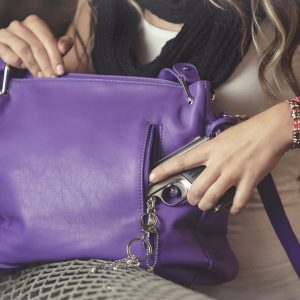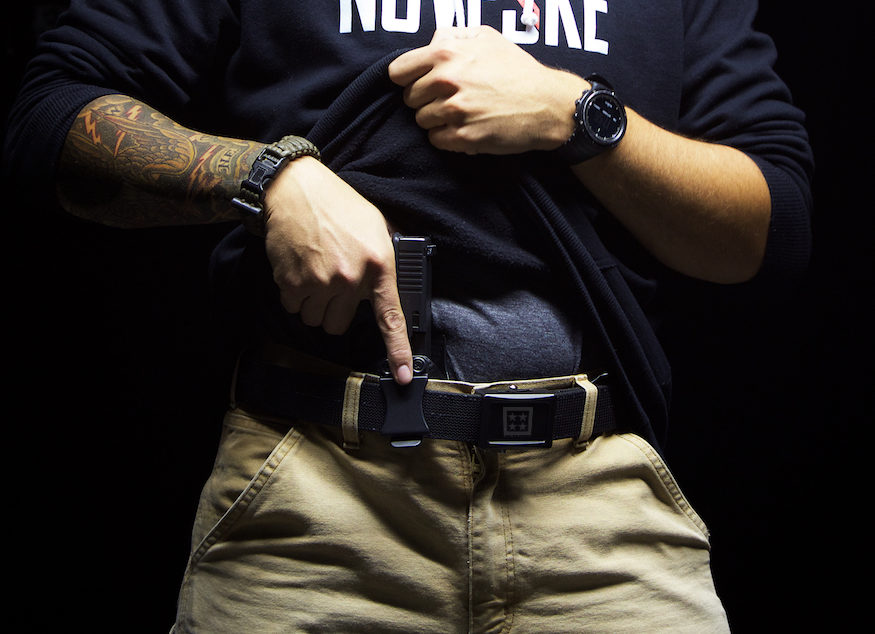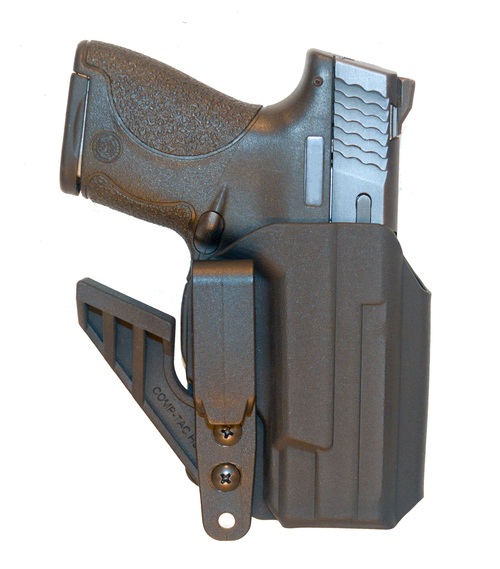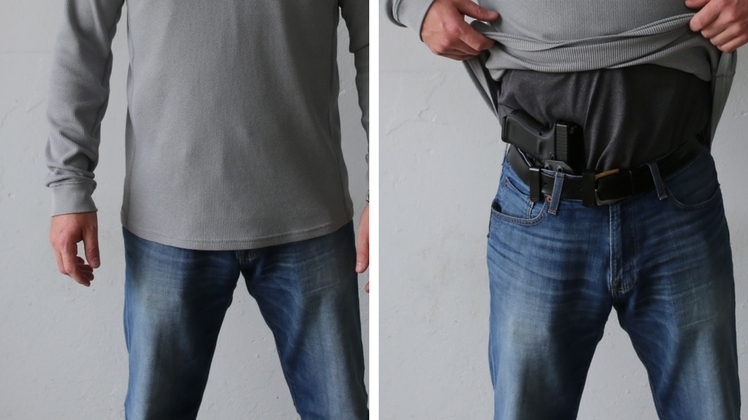When carrying concealed, there are a few considerations you need to make. In today’s blog, we’re first going to discuss basic weapon safety and then how to safely carry and shoot your concealed carry weapon (CCW).
And if you already know it all… here’s an article with a bunch of funny memes of what you shouldn’t do with a firearm, so keep scrolling.
Weapon Safety
Weapon safety is vital; literally, not being safe can be the difference between life and death. Too many times, you hear stories about some guy using his weapon light to search his truck and shooting a hole in the floorboard or someone deciding to clean their weapon without first checking the chamber and shooting a hole in their foot. While neither of these is necessarily life-threatening, a change in direction could cost someone their life. That’s why we talk about it so much because it’s important.
When it comes to weapon safety, there are a few rules you should be following no matter what.

Know what’s behind your target: If you’re aiming at a bad guy and a mother with her infant are standing behind him, you shouldn’t be taking that shot because bullets can travel through the body, and next thing you know, you’ve shot three people, two of which were innocent.

Or, maybe you can’t see behind your target; you shouldn’t take that shot either because there could be innocent bystanders behind them that you’re unaware of.
Don’t point at anything you don’t intend to shoot: This seems obvious, but this is where we see a lot of accidents. If you’ve not seen it, scroll through YouTube for a bit where some idiot (and yes, we mean that) is playing around with a gun and ends up shooting himself or his buddy because they’re aiming at each other. Or look at the below picture for a while.

Always treat your weapon as if it’s loaded: Many accidents happen because someone thought the weapon wasn’t loaded, and in fact, it was. While you should be checking to make sure any weapon you’re handling without the intent of firing is unloaded, you should still treat it as if it’s loaded, even after confirming. Also, it must be said, checking to make sure that the firearm is unloaded means checking the magazine well AND the chamber. There’s always a chance a round is loaded, and dropping the magazine won’t eject the round from the chamber, so check that too! The guy who shot into his downstairs neighbor’s apartment didn’t do this—luckily, no one was injured.

Even if you checked the mag well and chamber, treat the weapon as loaded. No one wants a weapon pointed at them; they don’t know it’s unloaded. And how you handle your weapon is how you’ll use it. So, please don’t be stupid by handling it like it’s a toy; it is not.
Please don’t put your finger in the trigger guard until you’re ready to shoot: This also might seem like an obvious safety rule, but it too is often ignored. Here’s the thing, pulling a trigger is pretty natural for the human body, even if you don’t normally or have never touched a firearm. That’s because you see it in movies, shows, video games, etc. If you put your finger in the trigger guard in preparation for a shot (say, clearing out a building), and someone pops out in front of you (scared victim running for safety), you’re more likely to shoot them without thinking. Whereas, not having your finger on the trigger gives you time to think before you shoot, and hopefully, that split second is just enough time to realize it’s not the target in front of you.

So, those are the basics. Now, let’s talk about the considerations you need to make when it comes to your CCW.
Weapon Safety with a CCW
When you carry concealed, whether under a shirt, coat, bag, etc., you have to account for drawing your weapon from that position. If you encounter a situation where you’re going to have to pull the trigger on a target, you aren’t standing on the firing line with the pistol on target, loaded and ready to go, which means there’s a chance for hangups. This is why you need to practice and train for how you carry.
In fact, it’s the additional cause for worry that some gun ranges don’t let shooters practice drawing from concealed positions.

If you happen to be at a range that won’t let your practice drawing from your carry position, there are ways to get around that, such as by practicing at home.
Rang isn’t working out? Read our blog, What Do You Do If Your Range Won’t Let You Do Train The Way You Want, for a few tips.
Now, when you do this, unless it’s at a home range or someplace that you can shoot safely, your weapon should be unloaded. In fact, start practicing unloaded first because you won’t be getting any shots off. Once you become proficient at drawing, then you practice drawing and taking a shot. Please, make sure you are proficient at drawing before combining it with live fire.
If you combine these two before becoming proficient and then start throwing in quick-fire, your chance of pulling the trigger too soon increases (another reason why we don’t put our finger on the trigger or in the trigger guard until ready to shoot). And who knows what you’re aiming at in this motion until you get on target, probably your foot… I hope you didn’t want that toe.
Safely Drawing From Under Clothes
Now that we’ve covered the basics of drawing with a CCW, let’s get a bit more specific, starting with the most used concealed method—under clothes.
The more layers you wear, the harder or slower you will be at drawing your CCW. That’s because there are barriers between you and the pistol. This is one reason some people choose not to carry concealed because they don’t want to sacrifice even a millisecond between getting to their weapon.
If you’re interested in the most common arguments people make against open and concealed carry, check out our blog: Concealed Carry vs. Open Carry | Most Common Arguments

The best thing you can do to maintain safety when drawing from under a layer or multiple layers (i.e., t-shirt, sweater, and coat.) is to practice. It isn’t easy to be comfortable doing something you never do. And being uncomfortable means, you’re probably not confident either. And lack of confidence can mean a lack of safety as well. So, practice drawing from concealed IWB or OWB, AIWB, from behind the back; wherever it is, you place your pistol on your waistband. Practice so that when things get real, you don’t put a hole in your foot, leg, or an innocent bystander.














Leave a Reply
Your email address will not be published. Required fields are marked *